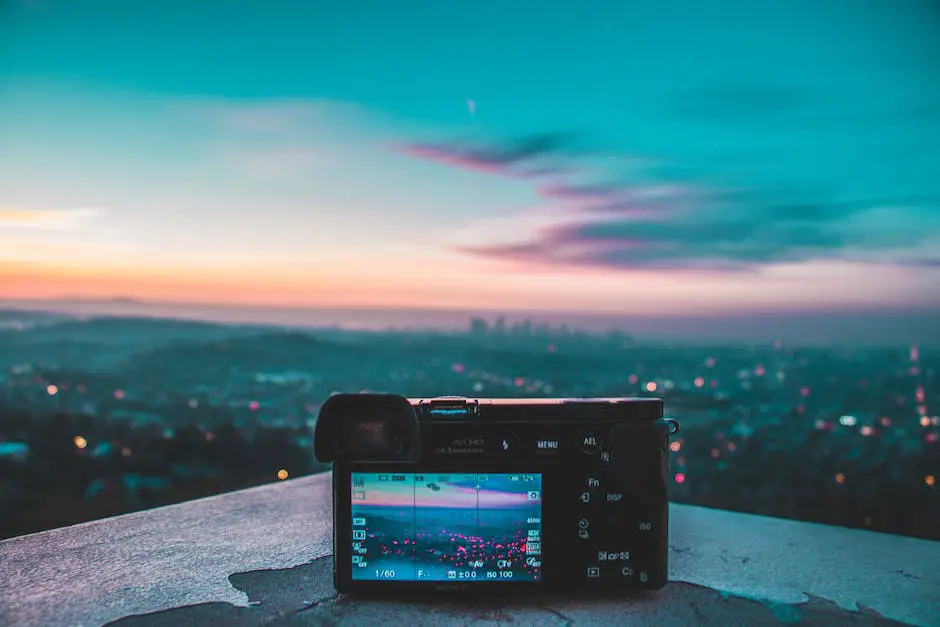Embarking on a journey saturated with new experiences, unique cultures, mesmerizing sceneries, and intriguing human stories, travel photography can be a thrilling adventure. At its core, it’s more than just capturing sceneries, it’s about narrating an experience, recording an emotion, and illustrating the beauty of our diverse world. In this vast landscape of continual learning and immense creativity, understanding the fundamentals of travel photography, honing your skills, and mastering the art of storytelling are key to grasping the essence of your subject and creating lasting impressions. From the equipment that forms your creative toolkit to the art of crafting a compelling narrative, each aspect of travel photography opens the doors to another layer of understanding.
Fundamentals of Travel Photography
Understanding the Nature of Travel Photography
Travel photography is a genre that captures the essence of a place and its culture. Instead of merely “capturing memories,” a travel photographer aims to reveal the broader context of the landscapes and people they photograph, highlighting the unique aspects of each location. The main goal is to tell a story through images, compelling viewers to engage with their photos, and ultimately use them as a medium to understand different cultures, customs, and locations.
The Essential Gear for Travel Photography
The equipment needed for travel photography is usually minimalistic and lightweight since traveling involves moving around frequently. A sturdy and dependable camera is mandatory, as it will be your primary tool. DSLRs and mirrorless cameras are often the go-to choices due to their interchangeable lens systems and superior image quality. A variety of lenses can be beneficial too: wide-angled lenses are great for landscapes and cityscapes, while prime lenses will work well for street and portrait photography. Other necessary equipment includes extra batteries for your camera, memory cards, a tripod, a cleaning kit for your gear, and a reliable bag to carry it all.
Knowing Your Gear Inside out
It’s important to understand your gear thoroughly because catching that perfect ray of light, that genuine smile, or the exact moment a bird takes flight requires reflexes and readiness over deep technical thought. Get familiar with your camera’s controls, such as the ISO settings, shutter speed adjustments, and the aperture to regulate how much light enters the camera. Mastering these controls is essential to achieve desired effects in different lighting conditions and scenarios.
Landscape Photography in Travel Photography
Landscape photography showcases nature’s majesty, the intricate details of a cityscape or a quiet countryside view. A powerful landscape image can inspire a sense of wanderlust in the viewer. Perfecting landscape photography requires patience, understanding of natural light, and the ability to frame a shot effectively. Wide-angled lenses are highly suitable for these types of shots, as they offer vast coverage of the scenery.
Portrait Photography in Travel Photography
Travel doesn’t only involve landscapes and monuments; it’s also about the people you meet and their stories that add life to the place. Portrait photography aims to capture the emotions and expressions of individuals you meet during your journey. It can be an incredible way to showcase a place’s culture and society. Remember to always ask for permission before taking someone’s photo.
Street Photography in Travel Photography
Street photography captures daily life and its unexpected, fleeting moments. It can be an excellent way to capture the essence of local life, reflecting the mood and pace of the place you’re visiting. Good street photography requires a keen eye for detail, the ability to anticipate action, and quick responsiveness to capture spontaneous moments.
Wrapping things up, travel photography presents a broad and multifaceted spectrum. It encompasses various types of photography, each with its unique skill set. Fundamentally, it tells a tale, capturing and conveying the spirit of different locations.

Improving Photography Skills
Honing the Art of Framing and Composition in Travel Photography
The elements of framing and composition cannot be overlooked in travel photography. They serve as the backbone of how components are positioned and interact within the frame. The ultimate objective is to orchestrate a balance that intuitively leads the viewer’s gaze to the key pieces of the scenario.
Travel photographers often adhere to the Rule of Thirds as a guideline. The frame is divided into nine sections of equal proportion, with the subject ideally positioned at the intersections or along these lines. Nevertheless, remember that rules can be stretched or even disregarded altogether in photography. Framing is about recognizing what complements each situation best, often necessitating innovation and exploration beyond conventional boundaries.
Further, familiarizing yourself with a spectrum of composition styles can significantly improve your travel photography. Techniques such as layering contribute depth, eliciting a sense of distance in the image. Similarly, employing leading lines can steer the viewer’s attention towards the primary focus.
Working with Different Lighting Conditions
Light is the most crucial element of photography. It sets the mood of the image and emphasizes details. In travel photography, you don’t have control over the lighting conditions, making this an essential skill to master.
Experiencing different lighting conditions, from harsh midday sun to cloudy skies or golden hour, will allow you to understand how to adjust your settings accordingly. Shooting during different times of the day and analyzing how light interacts with your surroundings will help you get the best shots.
High Dynamic Range (HDR) technique can be useful in challenging lighting conditions. By taking multiple photos with different exposures and blending them together, you can achieve an image with a balanced light and dark areas.
Understanding Manual Mode in Photography
Shooting in manual mode gives you total control over your camera settings. It means you have the freedom to adjust the aperture (f-stop), shutter speed, and ISO according to the scene you capture.
Aperture controls the amount of light entering your camera and affects the depth of field. A lower number means a larger opening and more light entering the camera, resulting in a shallow depth of field.
Shutter speed determines how long the shutter stays open. Faster speeds freeze the motion, while slower speeds create a blur, which can be used creatively.
ISO sets the camera’s sensitivity to light. A higher ISO increases the camera’s sensitivity to light, making it suitable for darker conditions but also causing more grain or noise.
Once you get comfortable with these settings, you will be capable of capturing any scene the way you envision it, instead of relying on your camera’s automatic preferences.
Mastering Post-Processing Skills
Although your goal should always be to capture the best photograph in-camera, post-processing in software like Photoshop or Lightroom allows you to enhance your images creatively and correct any issues with exposure, color balance, or sharpness.
Learning how to use basic adjustments is essential, including white balance, exposure, contrast, highlights, shadows, whites, blacks, clarity, and saturation. Moreover, understanding layer masks and selective editing can add depth and create a mood in your images.
Enhancing Skills through Continuous Practice and Creativity
Steadily enhancing your travel photography talent requires incessant practice and inventiveness. Carry your camera wherever you go, experimenting with diverse shots, themes, and light conditions. Stretch your abilities by taking on varying photographic challenges or environments. You could try capturing the urban rush or a serene sunset. By injecting diversity into your photography, you broaden your adaptability and proficiency.
Bear in mind that not every image has to be a work of art. The essence of photography lies in capturing genuine moments, often the most accurate representation of your personal experience and viewpoint becomes the best shot. Cultivate a patient attitude, have faith in your potential, and traverse the enjoyable pathway to becoming a superior travel photographer.

Becoming a Storyteller Through Travel Photography
Grasping the Cultural Nuances and Context of a Location
Being in tune with the local culture and context is a fundamental part of travel photography. It introduces an element of depth to your photos and allows you to share a compelling narration. The ideal way to grasp a location’s cultural nuances is by connecting with the native inhabitants, understanding their lifestyle, anecdotes, traditions, and customs. This understanding infuses an emotional dimension into your images, rendering them even more captivating. An image of a vibrant marketplace springs to life if you realize it’s a traditional gathering spot where locals engage in bartering goods, rooted in age-old customs. As you engage in these cultural exchanges, it’s crucial to maintain respect and sensitivity.
Capturing Compelling Details
Travel photography is not just about capturing vast landscapes and popular tourist spots. The essence resides within the smallest details. These details might be unnoticed by many, but they hold the potential to tell great stories. A worn-out handle of a shop door, vibrant patterns of a native fabric, or an elderly person’s wrinkled hands can tell tales more profound than broad panoramas. The key is to be observant and learn to see beyond the obvious. Using macro lenses and focusing on details that signify its culture and history can make your travel photography intriguing.
Building a Visual Narrative
Your travel photography should tell a story, a visual narrative. But how does one accomplish that? It starts in the pre-planning stage – research about the place, its people, and its culture. Then, while on location, capture a variety of shots. Wide-angle shots to establish the scene, medium shots to focus on activities, and close-ups to present small but significant details. Show the different aspects of life, such as work, play, community relationships, and traditions. Also, look for moments of contrast or contradiction as they can add a strong narrative element to your photo series.
Presenting and Sharing Your Work for Maximum Impact
After capturing your visual story, it’s time to share your work with others. Select your best shots that accurately represent the narrative you want to depict. One approach is to provide a thoughtful sequence that shows the progression of your story – start with establishing shots, then include images that show action, details, and close-ups.
Social media platforms like Instagram, Facebook, or personal blogs are excellent platforms for sharing. These platforms are built to display image sequences, ideal for visual storytelling. Use captions effectively – they should complement the image and further the story you’re trying to tell.
Photography exhibitions or competitions are great platforms for high-quality prints. When presenting your work in these formats, provide a clear description of the cultural and context behind the images.
Remember, the essence of good travel photography is not just about showcasing exotic locations, but rather about sharing an immersive, informative, and engaging narrative about the place and its people.

As we weave our way through the diverse aspects of travel photography, it becomes clear that every snapshot is not simply a capture, but a conversation with the viewer. A well-executed frame can speak volumes about a place, its people, and the stories that permeate its air. With the fundamentals tucked under your belt, a commitment to continual skill improvement, and a heart for telling stories, journeying through the realm of travel photography can be a deeply rewarding experience. So, ready your gear, frame your vision and step beyond just seeing a picturesque landscape or a candids street scene to truly experiencing it, sharing it, and making viewers feel like they’re right there with you
Originally posted 2023-10-21 22:05:50.



